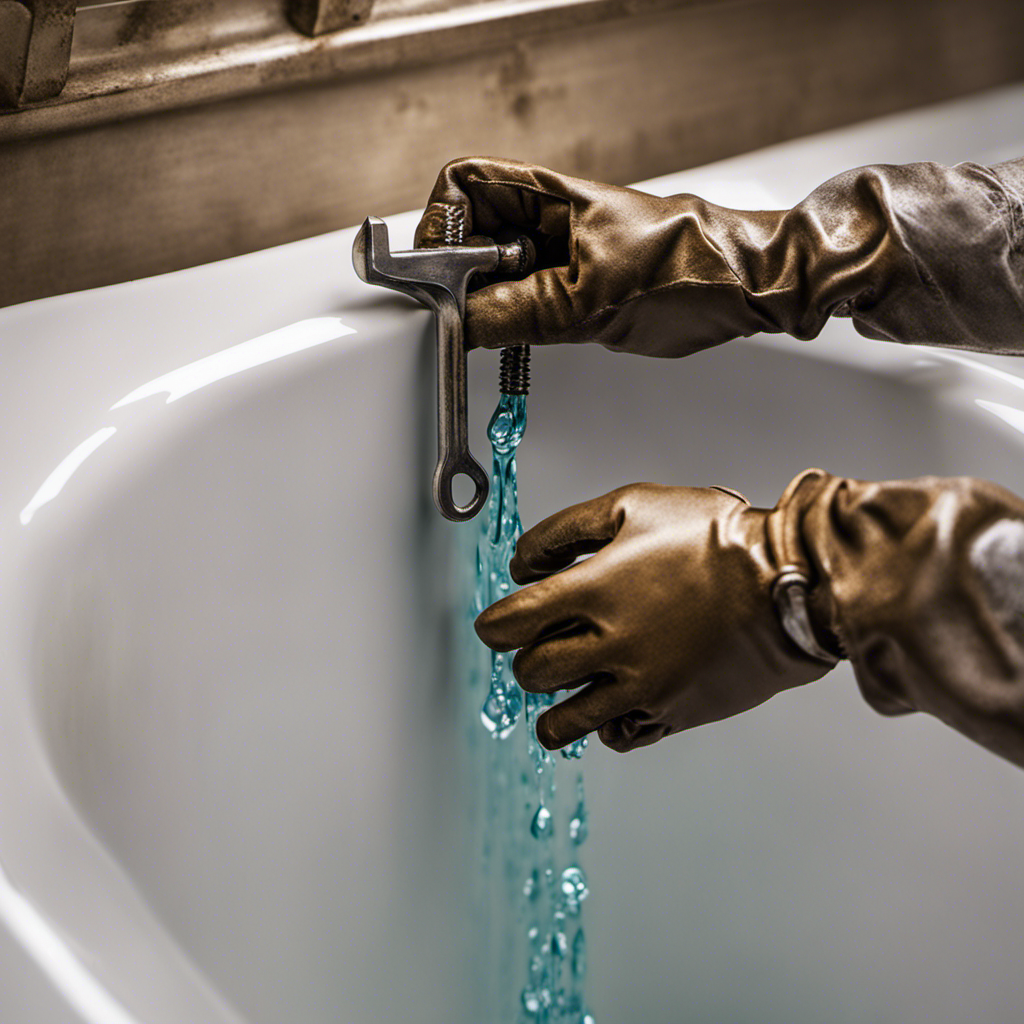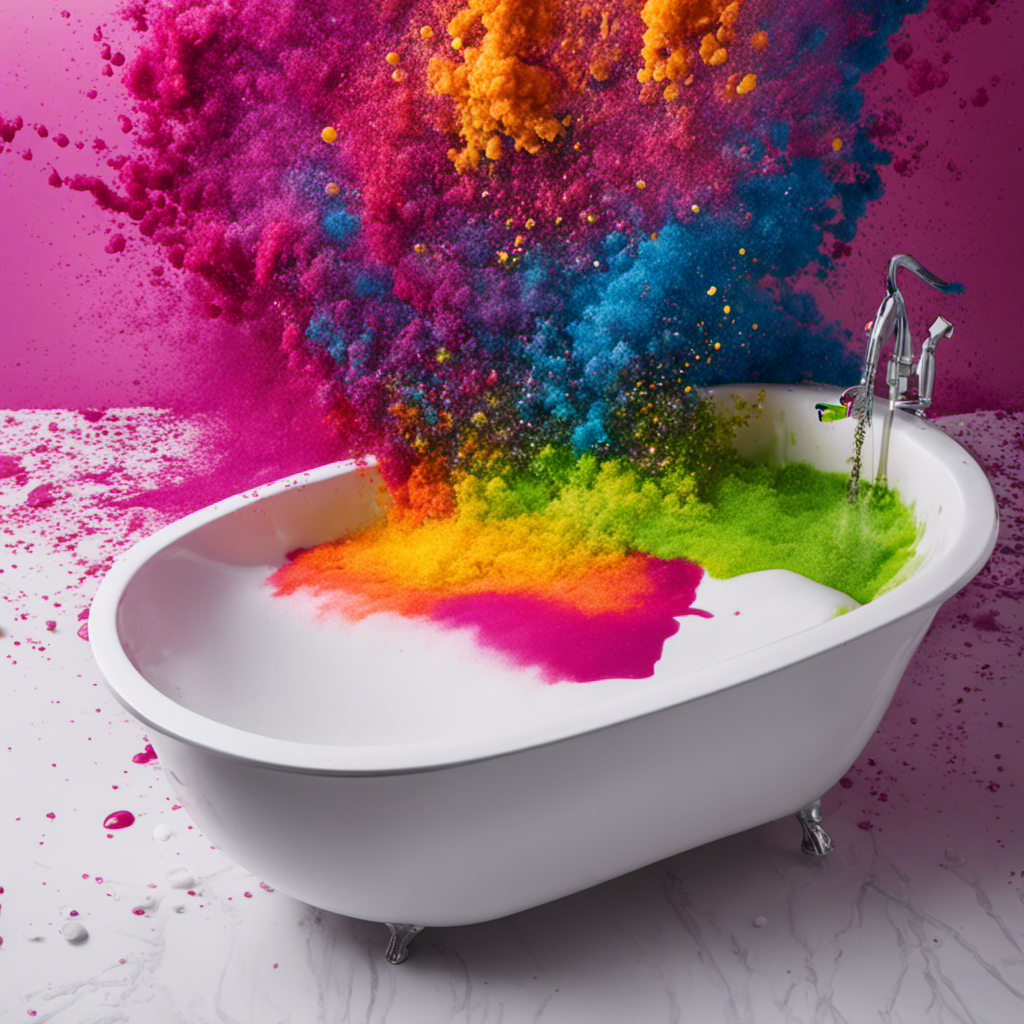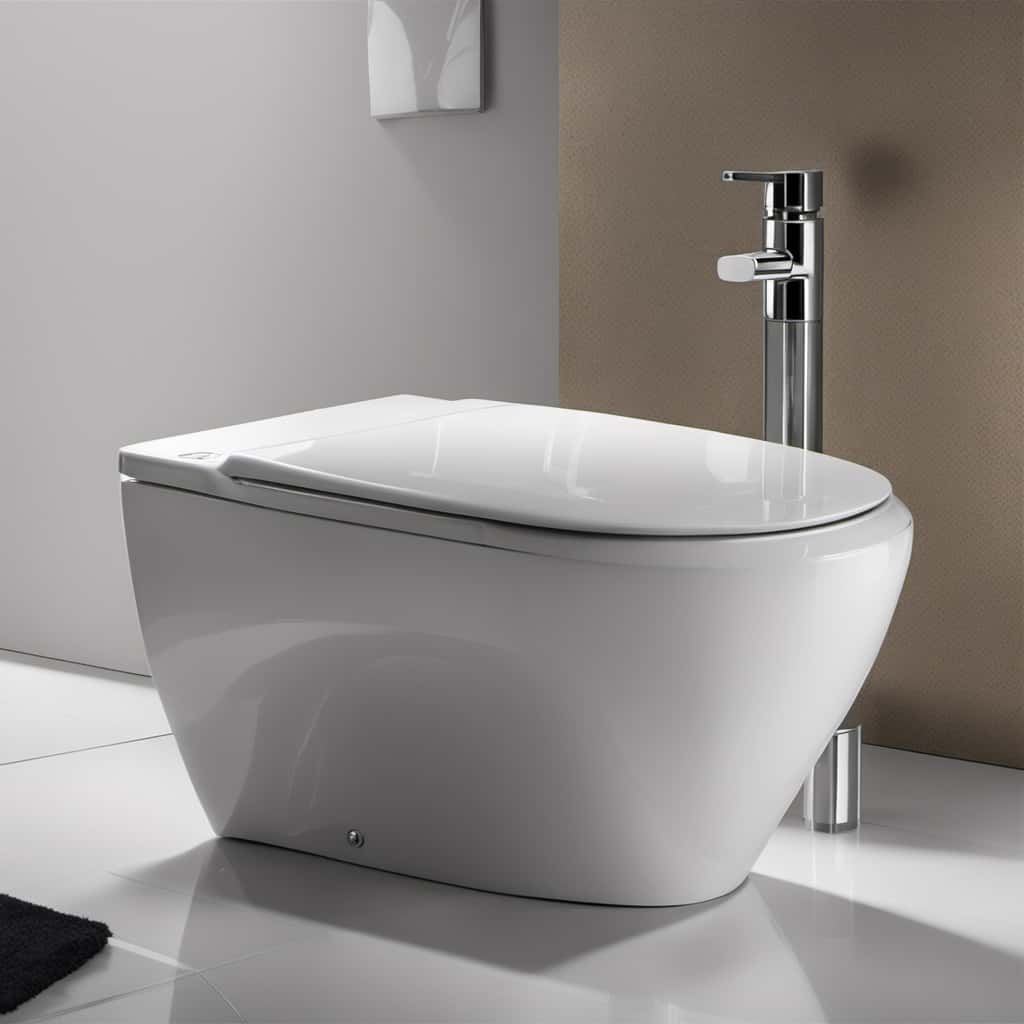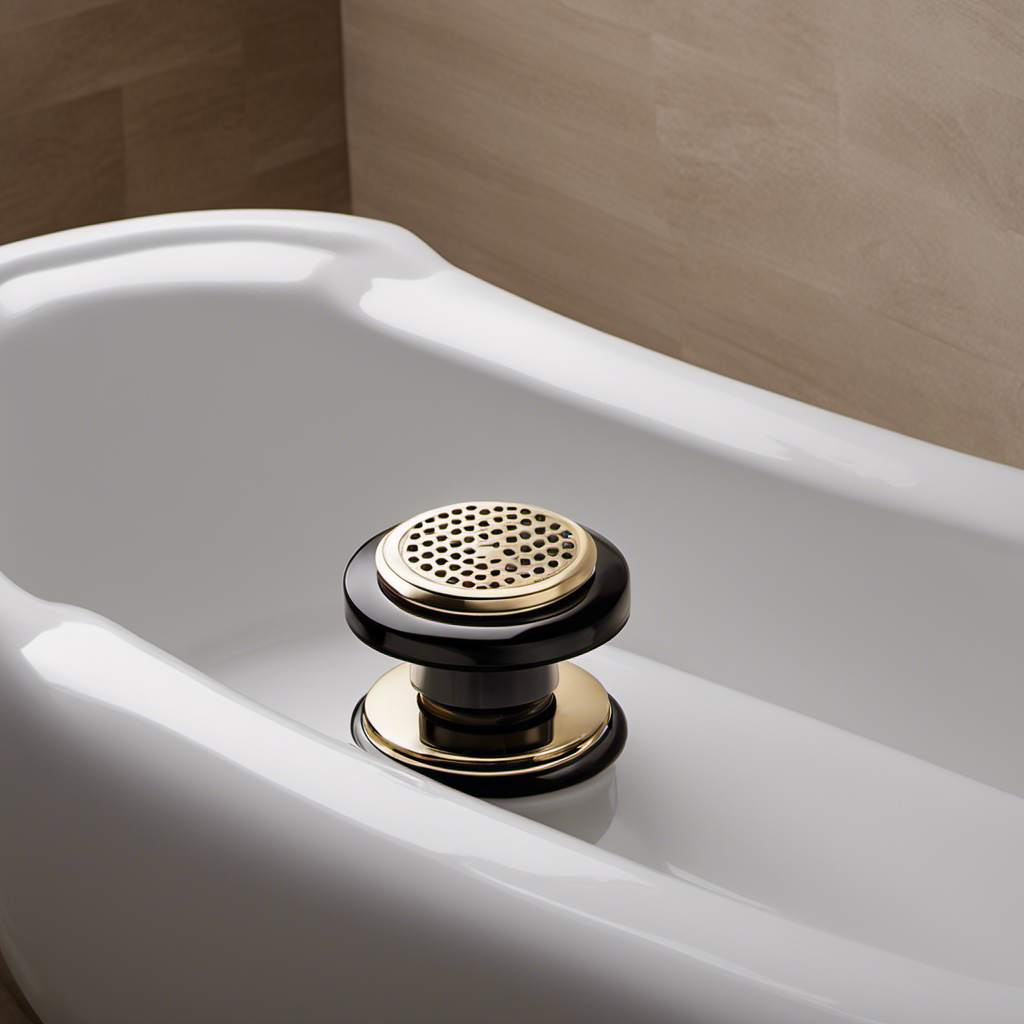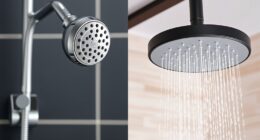As I stepped into the luxurious bathroom, I couldn’t help but admire the beautiful bathtub in front of me. Its smooth surface and glossy finish were captivating, but I couldn’t help but wonder: is it made of fiberglass or acrylic?
Determining the material of a bathtub may seem like a daunting task, but fear not! In this article, I will guide you through the process of identifying whether your bathtub is fiberglass or acrylic, providing you with the knowledge to make an informed decision.
Key Takeaways
- The appearance of acrylic bathtubs is characterized by a glossy and smooth surface texture, while fiberglass bathtubs have a less shiny and sleek appearance.
- Acrylic bathtubs are heavier than fiberglass bathtubs, which can affect the installation process and may require additional support.
- Acrylic bathtubs produce a denser and more solid sound when tapped, while fiberglass bathtubs produce a hollow and echoing sound.
- Acrylic bathtubs have superior water retention properties and provide a quieter and more relaxing bathing experience compared to fiberglass bathtubs.
Appearance
If the bathtub has a glossy and smooth surface, it’s likely acrylic. Acrylic bathtubs are made from a material composition that includes a combination of acrylic polymer and fiberglass reinforcement. This composition gives them their durability and strength.
The surface texture of an acrylic bathtub is typically smooth and sleek, making it easy to clean and maintain. It also has a high-gloss finish that adds to its attractive appearance.
The smooth surface of acrylic bathtubs also helps to retain heat, providing a more comfortable bathing experience. Additionally, acrylic is a non-porous material, which means it does not absorb water or stains, making it resistant to discoloration and mold growth.
Overall, the material composition and surface texture of acrylic bathtubs make them a popular choice for homeowners seeking a durable and visually appealing option.
Weight
To determine the material of your bathtub, you can easily feel the weight. Fiberglass bathtubs tend to be lighter compared to acrylic ones. Here are some key points to consider when determining the material based on weight:
- Fiberglass bathtubs are typically lightweight and easy to carry.
- Acrylic bathtubs are heavier and may require more effort to lift and install.
- The weight of the bathtub can affect the installation process, as heavier tubs may require additional support during installation.
When it comes to cleaning, both fiberglass and acrylic bathtubs have their own recommended cleaning methods. Fiberglass tubs can be cleaned using non-abrasive cleaners to avoid scratching the surface, while acrylic tubs can be cleaned with mild soap and water or non-abrasive cleaners specifically designed for acrylic surfaces.
In the next section, we will explore another method to determine the material of your bathtub: sound.
Sound
Listen carefully to the sound your bathtub makes when you tap on it with your knuckles. The sound can give you clues about the material your bathtub is made of and its soundproofing capabilities.
Fiberglass bathtubs tend to produce a hollow, echoing sound when tapped, while acrylic bathtubs produce a denser, more solid sound. This is because acrylic is a denser material, which contributes to better soundproofing.
Additionally, acrylic bathtubs are engineered to minimize noise transmission, providing a quieter and more relaxing bathing experience. Moreover, acrylic bathtubs have superior water retention properties, as they are non-porous and resistant to stains and fading.
This means that you can enjoy longer soaks without worrying about water leakage or seepage.
Temperature
The temperature of the water in your bathtub can greatly impact your bathing experience. Achieving the perfect temperature is essential for relaxation and comfort. Here are three important factors to consider:
-
Thermal Conductivity: The material of your bathtub plays a crucial role in how it retains and transfers heat. Fiberglass bathtubs have a lower thermal conductivity compared to acrylic bathtubs. This means that acrylic tubs will feel warmer to the touch and retain heat longer, providing a more enjoyable bathing experience.
-
Heat Retention: Acrylic bathtubs excel in heat retention due to their dense and non-porous nature. They can keep the water warm for a longer period, allowing you to indulge in a soothing bath without the need for constant reheating.
-
Energy Efficiency: With their superior heat retention properties, acrylic tubs can help you save on energy costs. They require less hot water and reduce the need for additional heating, making them an eco-friendly option.
Considering these factors when choosing a bathtub will ensure you have a relaxing and comfortable bathing experience.
Durability
When choosing a bathtub, it’s important to consider the durability of the material. In terms of lifespan comparison and resistance to cracks, fiberglass and acrylic are two popular options.
Fiberglass tubs are known for their durability and long lifespan. They are made by layering fiberglass strands with a resin coating, creating a strong and sturdy structure. Fiberglass is also highly resistant to cracks, making it a reliable choice for those seeking a long-lasting bathtub.
On the other hand, acrylic tubs are also durable and have a comparable lifespan to fiberglass. Acrylic is a non-porous material, which means it is less likely to develop cracks over time.
Both fiberglass and acrylic tubs require proper maintenance to ensure their longevity. Speaking of maintenance…
Maintenance
To keep your tub in good condition, you should regularly clean and properly care for it. Here are three important tips for maintaining your bathtub:
-
Regularly clean your bathtub using a mild, non-abrasive cleaner to remove soap scum and stains. Avoid using harsh chemicals or abrasive scrubbers that can damage the surface.
-
Prevent clogs by using a hair catcher or strainer in the drain to catch hair and other debris. This will help prevent blockages and maintain proper drainage.
-
Address any small chips or cracks immediately to prevent them from becoming larger issues. Use a repair kit specifically designed for your bathtub material to fix minor damages.
By following these maintenance tips, you can ensure the longevity and functionality of your bathtub.
Now, let’s move on to discussing the price of different types of bathtubs.
Price
If you’re considering purchasing a new bathtub, it’s important to compare the prices of different types before making a decision. When it comes to cost, there are several factors to consider, including the material of the bathtub. Fiberglass and acrylic are two popular options, each with their own price range. Fiberglass bathtubs tend to be more budget-friendly compared to acrylic ones. However, it’s important to note that the cost can vary depending on the brand, size, and features of the bathtub. To give you a better understanding, here is a comparison table:
| Material | Average Cost |
|---|---|
| Fiberglass | $500 – $1000 |
| Acrylic | $1000 – $2000 |
| ———— | ————– |
As you can see, fiberglass bathtubs are generally more affordable, making them a great option for those on a tight budget.
Conclusion
After considering all the factors, it’s clear that determining whether a bathtub is fiberglass or acrylic is crucial for making the right choice.
By analyzing its appearance, weight, sound, temperature, durability, maintenance, and price, we can accurately identify the material.
Remember, the wrong choice could result in disastrous consequences, such as a crumbling bathtub or a never-ending cleaning routine.
So, take the time to investigate and ensure you don’t end up with a bottomless pit of regret!

